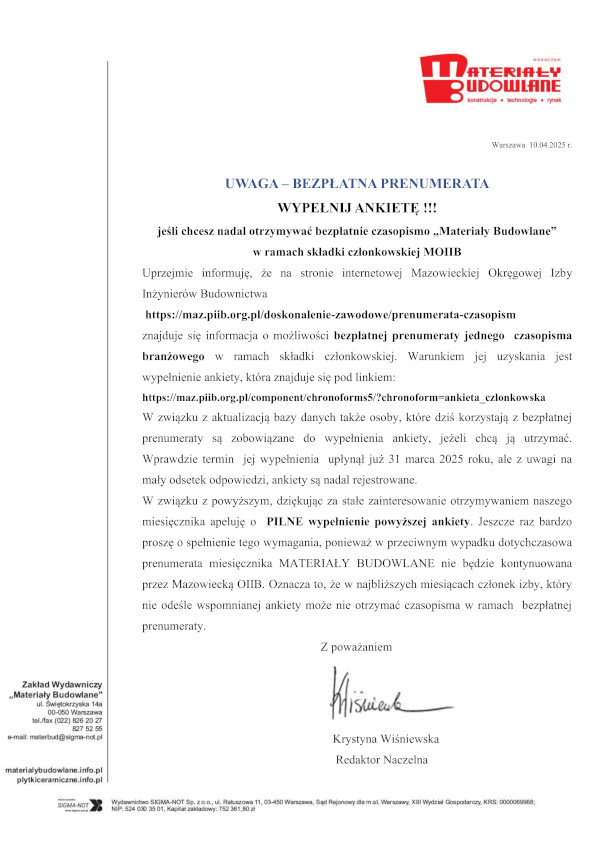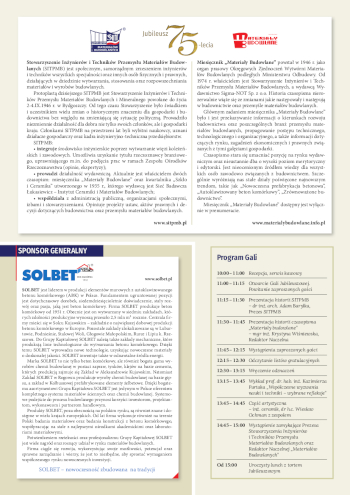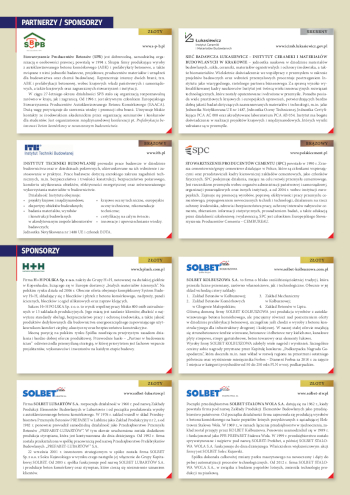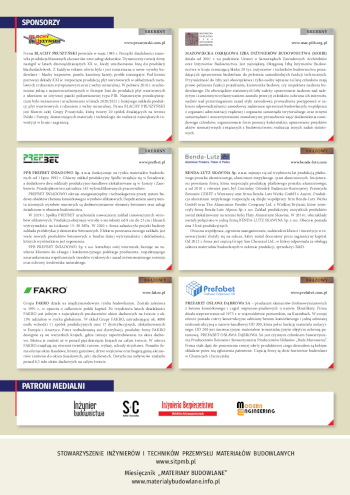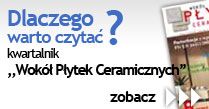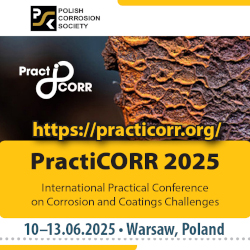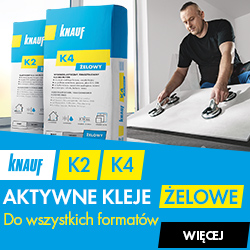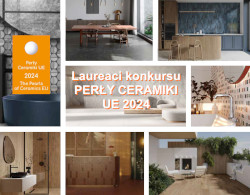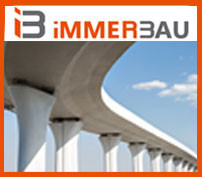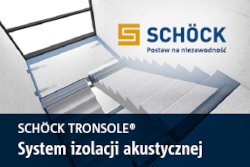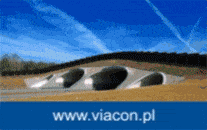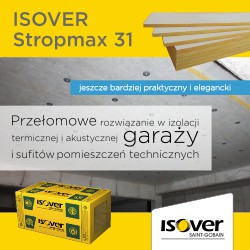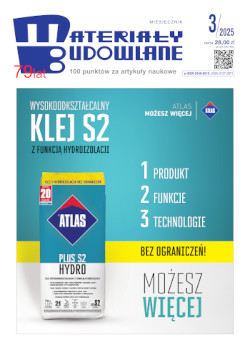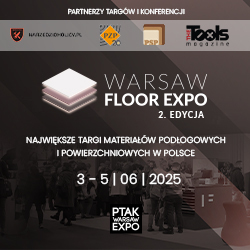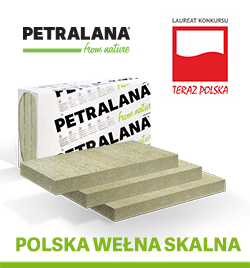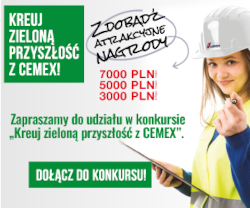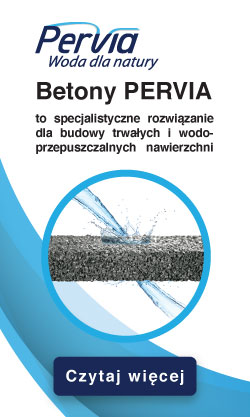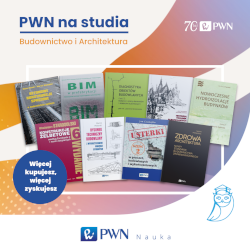Analiza porównawcza dwóch przykładowych algorytmów optymalizacji topologii o zmodyfikowanym udziale naprężeń o przeciwnych znakach
Open Access (Artykuł w pliku PDF)
citation/cytuj: Kowalski D. Comparative analysis of two exemplary algorithms for stress-biased topology optimization. Materiały Budowlane. 2024. Volume 625. Issue 9. Pages 32-37. DOI: 10.15199/33.2024.09.05
mgr inż. Damian Kowalski, Politechnika Częstochowska, Wydział Budownictwa
ORCID: 0000-0002-0257-7642
Corespondence address: Ten adres pocztowy jest chroniony przed spamowaniem. Aby go zobaczyć, konieczne jest włączenie w przeglądarce obsługi JavaScript.
DOI: 10.15199/33.2024.09.05
Scientific report / Doniesienie naukowe
Abstract. The aim of this publication is a comparative analysis of two representative methods of stress-biased topology optimization. The original pieces of the paper are modifications introduced in order to achieve computations convergence and to reduce the number of input parameters. Finally, both implementations were compared based on several practical application examples and conclusions were drawn from the analysis.
Keywords: topology optimization; stress bias; numerical methods; multi-material structures; composite structures.
Streszczenie. W artykule zaprezentowano analizę porównawczą dwóch reprezentatywnych metod optymalizacji topologii o zmodyfikowanym udziale naprężeń o przeciwnych znakach. Metody te zostały uprzednio zmodyfikowane w celu uzyskania zbieżności obliczeń. Wprowadzono również pewne modyfikacje w celu redukcji liczby parametrów wejściowych, a także porównano obie implementacje na bazie kilku praktycznych przykładów zastosowania oraz wyciągnięto wnioski z przeprowadzonej analizy.
Słowa kluczowe: optymalizacja topologii; metody numeryczne; konstrukcje wielomateriałowe; konstrukcje kompozytowe.
Literature
[1] Achtziger W. Truss topology optimization including bar properties different for tension and compression. Struct Optimization. 1996; 63–74.
[2] Querin OM, Victoria M, Martí P. Topology optimization of truss-like continuawith differentmaterial properties in tension and compression. StructMultidiscip O. 2010; https://doi. org/10.1007/s00158-009-0473-2.
[3] CaiK, Shi J,Wang ZZ. Tension/compression-only optimal stiffness design with displacement constraint. In: 2010 International Conference on Intelligent Computation Technology and Automation, ICICTA 2010. pp 678–681.
[4] Cai K.Asimple approach to find optimal topology of a continuum with tension-only or compression-only material. Struct Multidiscip O. 2011; https://doi. org/10.1007/s00158-010-0614-7.
[5] Liu S, Qiao H. Topology optimization of continuum structures with different tensile and compressive properties in bridge layout design. Struct Multidiscip O. 2011; https://doi. org/10.1007/s00158-010-0567-x.
[6] Victoria M, Querin OM, Marti P. Generation of strut-and-tie models by topology design using differentmaterial properties in tension and compression. StructMultidiscip O. 2011; https://doi.org/10.1007/s00158-011-0633-z.
[7] Bruggi M, Duysinx P. A stress-based approach to the optimal design of structures with unilateral behavior of material or supports. Struct Multidiscip O. 2013; https://doi. org/10.1007/s00158-013-0896-7.
[8] Bruggi M. Finite element analysis of no-tension structures as a topology optimization problem. Struct Multidiscip O. 2014; https://doi. org/10.1007/s00158-014-1093-z.
[9] Bruggi M. A numerical method to generate optimal load paths in plain and reinforced concrete structures. Comput Struct. 2016; https://doi. org/10.1016/j.compstruc. 2016.03.012.
[10] Gaganelis G, Jantos DR, Mark P, Junker P. Tension/compression anisotropy enhanced topology design. Struct Multidiscip O. 2019; https://doi.org/10.1007/s00158-018-02189-0.
[11] Smarslik M, Ahrens MA, Mark P. Toward holistic tension- or compression- biased structural designs using topology optimization. Eng Struct. 2019; https://doi.org/10.1016/j.engstruct. 2019.109632.
[12] Andreassen E, Clausen A, Schevenels M, Lazarov BS, Sigmund O. Efficient topology optimization in MATLAB using 88 lines of code. Struct Multidiscip O. 2011; https://doi. org/10.1007/s00158-010-0594-7.
Received: 27.05.2024 / Wpłynął do redakcji: 27.05.2024 r.
Revised: 17.06.2024 / Otrzymano poprawiony po recenzjach: 17.06.2024 r.
Published: 23.09.2024 / Opublikowano: 23.09.2024 r.
Materiały Budowlane 9/2024, strona 32-37 (spis treści >>)
Wpływ włókien szklanych na wybrane właściwości autoklawizowanych materiałów wapienno-piaskowych
Open Access (Artykuł w pliku PDF)
citation/cytuj: Jasińska I., Dachowski R., Jaworska-Wędzińska M. The effect of glass fibers on selected properties of autoclaved sand-lime materials. Materiały Budowlane. 2024. Volume 625. Issue 9. Pages 26-31. DOI: 10.15199/33.2024.09.04
Iga Jasińska, Uniwersytet Radomski im. Kazimierza Pułaskiego, Wydział Mechaniczny
ORCID 0000-0003-3990-7497
dr hab. inż. Ryszard Dachowski, prof. URad, Uniwersytet Radomski im. Kazimierza Pułaskiego, Wydział Mechaniczny
ORCID: 0000-0002-4412-7703
dr inż. Monika Jaworska-Wędzińska, Uniwersytet Radomski im. Kazimierza Pułaskiego, Wydział Mechaniczny
Corespondence address: Ten adres pocztowy jest chroniony przed spamowaniem. Aby go zobaczyć, konieczne jest włączenie w przeglądarce obsługi JavaScript.
DOI: 10.15199/33.2024.09.04
Scientific report / Doniesienie naukowe
Abstract. The aim of the study was to determine the effect of zirconia-coated (AR) glass fibers, with a length of 24 mm, on selected properties of autoclaved lime-sand samples, such as density, water absorption, and compressive strength. Microstructure observations were also conducted using SEM. The research was carried out using fibers with a mass content ranging from 1% to 5%. The obtained results provided the basis for concluding that samples containing 1 – 3% zirconia-coated glass fibers by mass exhibit higher compressive strength compared to the reference samples, and they indicate the direction for further research.
Keywords: sand-lime samples; zirconia-coated glass fibers; density; water absorption; compressive strength; microstructure; SEM
Streszczenie. Celem badań było określenie wpływu zawartości włókien szklanych z powłoką cyrkonową (AR) o długości 24mm, na wybrane właściwości autoklawizowanych próbek wapienno- -piaskowych, tj. gęstość, absorpcja wody i wytrzymałość na ściskanie, wykonanych na bazie mieszanki wapienno-piaskowej. Dokonano również obserwacji mikrostruktury za pomocą SEM. Badania przeprowadzono z użyciem włókien, których udział w masie wynosił od 1 do 5%. Otrzymane wyniki badań dały podstawę do stwierdzenia, że próbki zawierające w masie 1 – 3% włókien szklanych z powłoką cyrkonową wykazują wyższą wytrzymałość na ściskanie w odniesieniu do próbek referencyjnych, oraz wskazują kierunek dalszych badań.
Słowa kluczowe: próbki wapienno-piaskowe; włókna szklane z powłoką cyrkonową; gęstość, absorpcja; wytrzymałość na ściskanie; mikrostruktura, SEM.
Literatura
[1] Dachowski R, Nowek M. Chitozan i hydroxyapatyt jako dodatki modyfikujące właściwości wyrobów silikatowych. Matereriały Budowlane. 2015; https://doi.org/10.15199/33.2015.12.09.
[2] Jasińska I, Dachowski R, Jaworska-Wędzińska M. Thermal Conductivity of Sand-Lime Products Modified with Foam Glass Granulate, Materials. 2021; https://doi.org/10.3390/ma14195678.
[3] Pytel Z. Effect of waste limestone powder on properties and sulphate- -carbonate corrosion of autoclaved silicate materials, Epitoanyag – J. Silicate Based Composite Mater. 2022; https://doi.org/10.14382/epitoanyag- -jsbcm. 2022.26.
[4] Stepien A. Recykling w materiałach budowlanych: analiza możliwości i wyników wykorzystania piasku szklanego pochodzącego z recyklingu w materiałach autoklawizowanych. Energies. 2023; https://doi.org/10.3390/en16083529.
[5] Laukaitis A, Kerienė J, Mikulskis D, Sinica M, Sezemanas G. Influence of fibrous additives on properties of aerated autoclaved concrete forming mixtures and strength characteristics of products, Constr.and Build. Mat. 2009; https://doi.org/10.1016/j.conbuildmat.2009.04.007.
[6] Pehlivanl ZO, Uzun I, Demir I. Mechanicale and microstructural features of autoclaved aerated concrete reinforced with autoclaved polypropylene, carbon, basalt and glass fiber, Constr. and Build. Mat. 2015; https://doi.org/10.1016/j. conbuildmat. 2015.08.104.
[7] Boukni B. Effect of glass fibers on performance ofmortar and concreto, Studiesin Eng. and Exact Scien. 2024; https://doi.org/10.54021/seesv5n1-124.
[8] Petri M, Spiesz P. Zaprawy cementowe zbrojone mieszanymi włóknami szklanymi, właściwości i przykłady stosowani, W: (red.) Kijowski P, Deja J. Dni Betonu: tradycja i nowoczesność: konferencja: Wisła, 2008.
[9] Abdullah MM, Jallo EK. Mechanical Properties of Glass Fiber Reinforced Concrete, Al-Rafidain Engineering. 2012; 20, 5: 128 – 135.
[10] Sahu H, Naik B.An Experimental Analysis For Utilization Of Waste Glass Fiber As An Additive In Concrete For Eco-Friendly Construction, kuey, 2024; https://doi.org/10.53555/kuey. v30i5.6120.
[11] FangY, ChenB, Oderji SY. Experimental research onmagnesiumphosphate cement mortar reinforced by glass fiber. Constr. and Build. Mat. 2018; https://doi.org/10.1016/j.conbuildmat.2018.08.153.
[12] Kumar D, Rex LK, Sethuraman VS, Gokulnath V, Saravanan B. High performance glass fiber reinforced concrete. Mater. Today: Proceedings. 2020; https://doi.org/10.1016/j. matpr.2020.06.174.
[13] Dachowski R, Stępień A.: The impact of various additives on the microstructure of silicate products, Procedia Engineering. 2011, https://doi. org/10.1016/j. proeng. 2011.11.2127.
[14] Kičaitė A, Moceikis R. The degradation of glass fiber reinforced concrete and the potential for its improvement: A review, The Internat. Jou. of Engineer. and Scie. 2024; https://doi. org/10.9790/1813-1306118126.
[15] Namsone E, Šahmenko G, Korjakins A. Durability Properties of High Performance Foamed Concrete, Procedia Eng. 2017; https://doi. org/10.1016/j. proeng. 2017.02.120
[16] Kurdowski W. Chemia cementu i betonu, Wyd. Naukowe PWN, Warszawa 2010.
Received: 24.06.2024 / Wpłynął do redakcji: 24.06.2024 r.
Revised: 31.07.2024 / Otrzymano poprawiony po recenzjach: 31.07.2024 r.
Published: 23.09.2024 / Opublikowano: 23.09.2024 r.
Materiały Budowlane 9/2024, strona 26-31 (spis treści >>)
Wpływ metakaolinu i zeolitu jako dodatków zmniejszających ilość cementu na właściwości ekologicznych kompozytów cementowych
Open Access (Artykuł w pliku PDF)
citation/cytuj: Gołaszewska M, Gołaszewski J. Effect of metakaolin and zeolite as cement-reducing additives on the properties of ecological cement composites. Materiały Budowlane. 2024. Volume 625. Issue 9. Pages 18-25. DOI: 10.15199/33.2024.09.03
dr inż. Małgorzata Gołaszewska, Politechnika Śląska, Wydział Budownictwa
ORCID: 0000-0002-5249-2639
dr inż. Jacek Gołaszewski, , Politechnika Śląska, Wydział Budownictwa
ORCID: 0000-0003-4110-5581
Corespondence address: Ten adres pocztowy jest chroniony przed spamowaniem. Aby go zobaczyć, konieczne jest włączenie w przeglądarce obsługi JavaScript.
DOI: 10.15199/33.2024.09.03
Original research paper / Oryginalny artykuł naukowy
Abstract. In the study, the effects of metakaolinMK and zeolite Z on cement paste and mortar properties were determined. Blends with different proportions of MK and Z were introduced instead of cement in amounts of up to 40%. It was found that the MK/Z blends delayed the setting time, reduced the amount of hydration heat released and reduced the consistency of the mortars, decreased the early and 28-day strength, with little effect on the 90-day strength, and reduced the shrinkage of themortars. The intensity of the above-mentioned effects increases with an increase in the amount of MK/Z blend and/or an increase in the amount of Z in the blend. The synergistic effect resulting from the simultaneous introduction of MK and Z is not considerable, but by appropriately selecting the proportions of the MK/Z mixture, the properties of cement and cement composites can be modified and the amount of clinker or cement can be significantly reduced without affecting the strength.
Keywords: metakaolin; zeolite; cementitious composites; cement replacement.
Streszczenie. W badaniach określono wpływ metakaolinu MK i zeolitu Z na właściwości zaczynów i zapraw cementowych. Mieszaniny o różnych proporcjach MK i Z wprowadzono zamiast cementu w ilości do 40%. Stwierdzono, że opóźniają one czas wiązania, zmniejszają ilość wydzielonego ciepła hydratacji i pogarszają konsystencję zapraw, zmniejszają wytrzymałość wczesną i 28-dniową, w małym stopniu wpływają na wytrzymałość 90-dniową oraz zmniejszają skurcz zapraw. Intensywność wymienionych efektów zwiększa się wraz ze wzrostem ilości mieszaniny MK/Z i/lub ilości Z. Efekt synergii wynikający z jednoczesnego wprowadzenia MK i Z nie jest duży, ale odpowiednio dobierając proporcje mieszaniny MK/Z, można korygować właściwości cementu i kompozytów cementowych i bez pogorszenia ich wytrzymałości znacznie zmniejszyć ilość odpowiednio klinkieru lub cementu.
Słowa kluczowe: metakaolin; zeolit; kompozyty cementowe; zamiennik cementu.
Literature
[1] Kanamarlapudi L, Jonalagadda KB, JagarapuDCK, Eluru A. Different mineral admixtures in concrete: a review. SN Appl. Sci. 2020 https://doi. org/10.1007/s42452-020-2533-6.
[2] Chica L, Alzate A, Cellular concrete review: New trends for application in construction, Constr. Build. Mater. 2019. https://doi. org/10.1016/j. conbuildmat. 2018.12.136.
[3] Alexa-Stratulat S.-M, Olteanu I, Toma A.-M, Pastia C, Banu O-M, Corbu O.-C,TomI-O.TheUse ofNatural Zeolites inCement-BasedConstructionMaterials –AState of theArt Review. Coat. 2024. https://doi.org/10.3390/coatings14010018.
[4] Tran YT, Lee J, Kumar P, Kim K-H, Lee SS. Natural zeolite and its application in concrete composite production, Compos. B Eng. 2019, https://doi.org/10.1016/j.compositesb. 2018.12.084.
[5] Shekarchi M, Ahmadi B, Azarhomayun F, Shafei B, Kioumarsi M. Natural zeolite as a supplementary cementitious material –Aholistic review of main properties and applications. Constr. Build. Mater. 2023. https://doi.org/10.1016/j. conbuildmat. 2023.133766.
[6] Wild S, Khatib JM, Jones A. Relative strength, pozzolanic activity and cement hydration in superplasticised metakaolin concrete. Cem. Concr. Res. 1996. https://doi.org/10.1016/0008-8846 (96) 00148-2.
[7] Małaszkiewicz D. Metakaolinit jako pucolanowy dodatek do betonu – przegląd stanu wiedzy. Civil and Environmental Engineering/Budownictwo i Inżynieria Środowiska. 2015; 6, 81 – 94.
[8] Homayoonmehr R, Ramezanianpour AA, Mirdarsoltany M. Influence of metakaolin on fresh properties,mechanical properties and corrosion resistance of concrete and its sustainability issues: A review, J. Build. Eng. 2021. https://doi. org/10.1016/j. jobe. 2021.103011.
[9] Gowram I, BeulahM, Sudhir MR, Mohan MK, Jain D. Efficacy of Natural Zeolite andMetakaolin as PartialAlternatives to Cement in Fresh and Hardened High Strength Concrete.Advances inMater. Sci. Eng. https://doi. org/10.1155/2021/4090389.
[10] PN-EN 196-1:2016-07 Metody badania cementu – Część 1: Oznaczanie wytrzymałości.
[11] PN-EN 197-1:2012 Cement – Część 1: Skład, wymagania i kryteria zgodności dotyczące cementów powszechnego użytku.
[12] PN-EN 206:2014-04 Beton – Wymagania, właściwości, produkcja i zgodność.
[13] PN-EN 196-3:2016. Metody badania cementu – Część 3: Oznaczanie czasów wiązania i stałości objętości.
[14] PN-EN 196-11:2019-1Metody badania cementu – Część 11: Ciepło hydratacji – Metoda kalorymetrii izotermicznej.
[15] PN-EN 1015-3:2000/A2:2007Metody badań zapraw do murów – Określenie konsystencji świeżej zaprawy (za pomocą stolika rozpływu). [16] PN-EN 1015-4:2000 Metody badań zapraw do murów – Określenie konsystencji świeżej zaprawy (za pomocą penetrometru).
Received: 23.06.2024 / Wpłynął do redakcji: 23.06.2024 r.
Revised: 19.08.2024 / Otrzymano poprawiony po recenzjach: 19.08.2024 r.
Published: 23.09.2024 / Opublikowano: 23.09.2024 r.
Materiały Budowlane 9/2024, strona 18-25 (spis treści >>)
Analiza stanu odkształceń wielowarstwowych drukowanych belek betonowych poddawanych 3-punktowemu zginaniu
Open Access (Artykuł w pliku PDF)
citation/cytuj: Skibicki Sz., Szewczyk P., Sibera D. Strain distribution analysis in multilayered 3D printed beam during 3-point bending process. Materiały Budowlane. 2024. Volume 625. Issue 9. Pages 11-17. DOI: 10.15199/33.2024.09.02
dr inż. Szymon Skibicki, Zachodniopomorski Uniwersytet Technologiczny w Szczecinie, Wydział Budownictwa i Inżynierii Środowiska
ORCID: 0000-0002-2918-7759
dr inż. Piotr Szewczyk, Zachodniopomorski Uniwersytet Technologiczny w Szczecinie, Wydział Budownictwa i Inżynierii Środowiska
ORCID: 0000-0002-2707-5630
dr inż. Daniel Sibera, Zachodniopomorski Uniwersytet Technologiczny w Szczecinie, Wydział Budownictwa i Inżynierii Środowiska
ORCID: 0000-0001-7542-8093
Corespondence address: Ten adres pocztowy jest chroniony przed spamowaniem. Aby go zobaczyć, konieczne jest włączenie w przeglądarce obsługi JavaScript.
DOI: 10.15199/33.2024.09.02
Scientific report / Doniesienie naukowe
Abstract. The paper presents the results of testing 3D concrete samples, aimed at determining the impact of the effectiveness of interlayer bonding on the mechanical properties of the samples and the failure pattern (electrical resistivity strain gauge technique and digital image correlation (DIC) method were used). The tests showed that limiting the interlayer area led to a reduction in flexural strength by 37.4% and splitting strength by 52.2%.
Keywords: 3D concrete; 3D concrete printing; 3DCP; interlayer adhesion; additive manufacturing.
Streszczenie. Artykuł przedstawia wyniki badań próbek betonowych, wykonanych w technologii druku 3D, mających na celu określenie wpływu efektywności zespolenia międzywarstwowego na właściwości mechaniczne próbek oraz mechanizmu ich zniszczenia (wykorzystano technikę tensometrii elektrooporowej oraz metodę cyfrowej korelacji obrazu (DIC)). Badania wykazały m.in., że ograniczenie pola sczepności międzywarstwowej doprowadziło do zredukowania wytrzymałości na zginanie o 37,4% oraz na rozłupywanie o 52,2%.
Słowa kluczowe: beton 3D; druk 3D betonu; sczepność międzywarstwowa; wytwarzanie przyrostowe.
Literature
[1] Wangler T et al. Digital Concrete: A Review. Cement and Concrete Research. 2019; 123: 105780.
[2] Ivanova I et al. Comparison between methods for indirect assessment of buildability in fresh 3D printed mortar and concrete. Cement and Concrete Research. 2022; 156: 106764.
[3] Roussel N. Rheological requirements for printable concretes. Cement and Concrete Research. 2018; 112: 76 – 85.
[4] Perrot A et al. Structural built-up of cement-based materials used for 3D- -printing extrusion techniques. Mater Struct. 2016; 49 (4): 1213–20.
[5] Ding T et al. Mechanical behavior of 3Dprintedmortarwith recycled sand at early ages. Construction and Building Materials. 2020; 248 (2005): 118654.
[6] Tao Y et al. Shape stability of 3D printable concrete with river and manufactured sand characterized by squeeze flow. Cement and Concrete Composites. 2022; 133: 104674.
[7] Li Z et al. Fresh and Hardened Properties of Extrusion-Based 3D-Printed Cementitious Materials: A Review. Sustainability. 2020; 12 (14): 5628.
[8] Skibicki S et al. The effect of interlayer adhesion on stress distribution in 3D printed beam elements. Journal of Building Engineering. 2024; 87 (2): 109093.
[9] Zbyszyński Wet al. Data image correlation analysis of the destruction process of 3D printable layered beams subjected to the 3-point bending process. Theoretical and Applied Fracture Mechanics. 2023; 125 (03007): 103891.
[10] Alchaar AS et al. Mechanical properties of 3D printed concrete in hot temperatures. Construction and Building Materials. 2021; 266 (1): 120991.
[11] Luo S et al. Effects of interval time and interfacial agents on the mechanical characteristics of ultra-high toughnessnn cementitious composites under 3D-printed technology. Construction and Building Materials. 2023; 374 (8): 130936.
[12] Chen Y et al. Effect of curing methods during a long time gap between two printing sessions on the interlayer bonding of 3D printed cementitiousmaterials. Construction and BuildingMaterials. 2022; 332 (1): 127394.
[13] Skibicki S et al. Experimental Study of Hardened Young’s Modulus for 3D Printed Mortar. Materials (Basel). 2021; 14 (24).
[14] EN 1015-11:2020.Methods of test for mortar for masonry – Part 11: Determination of flexural and compressive strength of hardened mortar.
[15] Skibicki S et al. Potential of Reusing 3D Printed Concrete (3DPC) Fine Recycled Aggregates as a Strategy towards Decreasing Cement Content in 3DPC. Materials. 2024; 17 (11): 2580.
[16] Al-Noaimat YA et al. Recycled brick aggregates in one-part alkali-activated materials: Impact on 3D printing performance and material properties. Developments in the Built Environment. 2023; 16: 100248.
[17] EN 12390-6:2009. Testing hardened concrete – Part 6: Tensile splitting strength of test specimens.
[18] Wolfs RJM et al. Hardened properties of 3D printed concrete: The influence of process parameters on interlayer adhesion. Cement and Concrete Research. 2019; 119: 132–40.
[19] Pan T et al. Interlayer bonding investigation of 3D printing cementitious materials with fluidity-retaining polycarboxylate superplasticizer and high-dispersion polycarboxylate superplasticizer. Construction and Building Materials 2022; 330 (5): 127151
Received: 06.06.2024 / Wpłynął do redakcji: 06.06.2024 r.
Revised: 05.07.2024 / Otrzymano poprawiony po recenzjach: 05.07.2024 r.
Published: 23.09.2024 / Opublikowano: 23.09.2024 r.
Materiały Budowlane 9/2024, strona 11-17 (spis treści >>)
Nośność i odkształcenia strefy przypodporowej belek wykonanych z drobnokruszywowego fibrokompozytu
Open Access (Artykuł w pliku PDF)
citation/cytuj: Głodkowska W., Lehmann, M. Load-bearing capacity and strain of the shear area of beams made of fine-aggregate fiber composite. Materiały Budowlane. 2024. Volume 625. Issue 9. Pages 1-10. DOI: 10.15199/33.2024.09.01
prof. dr hab. inż. Wiesława Głodkowska, Politechnika Koszalińska, Wydział Inżynierii Lądowej, Środowiska i Geodezji
ORCID: 0000-0003-3719-5350
dr inż. Marek Lehmann, Politechnika Koszalińska, Wydział Inżynierii Lądowej, Środowiska i Geodezji
ORCID: 0000-0002-1314-3014
Corespondence address: Ten adres pocztowy jest chroniony przed spamowaniem. Aby go zobaczyć, konieczne jest włączenie w przeglądarce obsługi JavaScript.
DOI: 10.15199/33.2024.09.01
Original research paper / Oryginalny artykuł naukowy
Abstract. The article presents selected results of shear tests of reinforced concrete beams made of fine aggregate composite with the addition of steel fibers in the amount of 1.2%in relation to the volume of the composite. 20 beams with different shear reinforcement ratio in the form of stirrups, with and without the addition of steel fibers, were tested. The results of tests of the shear capacity and strain of the side surface of beams and stirrups are discussed. The conducted research, which is a part of a wide research program, has show that the elaborated composite with steel fibers, whose properties are similar or better than that of ordinary concrete, can be successfully used to make structural elements in terms of shear resistance. Composite, due to its properties and nature of work in shear conditions, could be analternative to ordinary concrete in some applications.
Keywords: fine aggregate; fibre composite; properties; shear bearing capacity; deformation; failure models.
Streszczenie. W artykule przedstawiono wybrane wyniki badań belek żelbetowych na ścinanie wykonanych z drobnokruszywowego fibrokompozytu z dodatkiem włókien stalowych w ilości 1,2% w stosunku do objętości kompozytu. Zbadano nośność na ścinanie dwudziestu belek o różnym stopniu zbrojenia w postaci strzemion, z dodatkiem włókien stalowych i bez włókien. Omówiono wyniki badań nośności oraz odkształcenia powierzchni bocznej belek i strzemion. Przeprowadzone badania, które są fragmentem szerokiego programu, wykazały, że opracowanego fibrokompozytu, którego właściwości są zbliżone lub lepsze od betonu zwykłego, można z powodzeniem użyć do wykonania elementów konstrukcyjnych w aspekcie nośności na ścinanie. Ze względu na właściwości i charakter pracy w warunkach ścinania fibrokompozyt byłby w niektórych przypadkach zastosowania alternatywą dla betonu zwykłego.
Słowa kluczowe: drobnokruszywowy fibrokompozyt; właściwości; nośność na ścinanie; odkształcenia; modele zniszczenia.
Literatura
[1] Yazıcı S, Inan G, Tabak V. Effect of aspect ratio and volume fraction of steel fiber on the mechanical properties of SFRC. Construction and Building Materials. 2007; https://doi. org/10.1016/j. conbuildmat. 2006.05.025.
[2] Hu H. Mechanical properties of SFRC using blended manufactured and recycled tyre steel fibres. Construction and Building Materials. 2018; https://doi. org/10.1016/j.conbuildmat.2017.12.116.
[3] Li C, Zhao M, Zhang X, Li J, Li X, Zhao M. Effect of Steel Fiber Content on Shear Behavior of Reinforced Expanded-Shale Lightweight Concrete Beams with Stirrups. Materials. 2021; https://doi.org/10.3390/ma14051107.
[4] Domski J, Zakrzewski M. Deflection of steel fiber reinforced concrete beams based on waste sand.Materials. 2020; https://doi.org/10.3390/ma13020392.
[5] Głodkowska W, Kobaka J. Estimating the properties of a fine aggregate fibre reinforced cementitious composite using non-destructivemethods. Journal ofCivilEngineering andManagement. 2018; https://doi.org/10.3846/jcem. 2018.6600.
[6] Głodkowska W. Waste Sand Fiber Composite:Models of Description of Properties and Application. Annu. Set The Environ Prot; 2018.
[7] Głodkowska W, Laskowska-Bury J, Kobaka J. Drobnokruszywowy kompozyt mineralny zbrojony włóknami rozproszonymi. Politechnika Koszalińska. 07.10.2021. Pat. 239641
[8] Batson G, Jenkins E, Spaney R. Steel Fibers as Shear Reinforcement Beams. ACI J. 1972, 69, 640 – 644.
[9] SharmaA, Shear K. Strength of Steel Fiber Reinforced Concrete Beams.ACI J. 1986, 83, 624–628.
[10] Narayanan R, Darwish I Y S. Use of Steel Fibres as Shear Reinforcement. ACI J. 1987, 84, 216 – 227.
[11] You Z, Jalai S, Ding Y. The composite effect of steel fibres and stirrups on shear behaviour of beams using self consolidating concrete. Engineering Structures. 2011; https://doi. org/10.1016/j. engstruct. 2010.09.023.
[12] Zhao J, Liang J, Chu L, Shen F. Experimental Study on Shear Behavior of Steel Fiber Reinforced Concrete Beams with High-Strength Reinforcement.Materials. 2018. https://doi. org/10.3390/ma11091682.
[13] Ding Y, Yulin Z, Ning X, Azevedo C. Shear resistance and cracking behaviour of SFRC beams with and without axial load. Magazine of Concrete Research. 2014; https://doi. org/10.1680/macr. 14.00043.
[14] Cuenca E, Conforti A, Minelli F, Plizzarii G A. A material-performance- -based database for FRC and RC elements under shear loading. Mater. Struct. 2018; https://doi. org/10.1617/s11527-017-1130-7.
[15] Lantsoght E O L. Database of Shear Experiments on Steel Fiber Reinforced Concrete Beams without Stirrups. Materials 2019; https://doi. org/10.3390/ma12060917.
[16] Lehman M. Nośność na ścinanie belek z fibrokompozytu na bazie piasków odpadowych. Politechnika Koszalińska. 06.2020.
[17] Głodkowska W, Ziarkiewicz M. Cracking behavior of Steel Fiber Reinforced Waste Sand Concrete beams in flexure – experimental investigation and theoretical analysis. Engineering Structures. 2018; https://doi.org/10.1016/j.engstruct. 2018.08.097.
[18] PN-EN 12620:2004 Kruszywa do betonu.
[19] Subramaniam KVL, Gali S. Shear behaviour of Steel Fiber Reinforced Concrete using full-field displacement from digital image correlation. MATECWeb of Conferences. 2017; https://doi. org/10.1051/matecconf/201712004003.
[20] Lim D H, Oh B H. Experimental and Theoretical Investigation on the Shear of Steel Fibre. Engineering Structures. 1999; https://doi. org/10.1016/S0141-0296 (98) 00049-2.
[21] ASCE-ACI Committee 426. The Shear Strength of Reinforced Concrete Members. Journal of Structural Division. 1973; 99, 6.
[22] Stratford T, Burgoyne C. Shear Analysis of Concrete with Brittle Reinforcement. Journal of composites for construction. 2003; https://doi. org/10.1061/(ASCE) 1090-0268 (2003) 7: 4 (323).
[23] Breveglieri M, Aprile A, Barros JAO. Shear strengthening of reinforced concrete beams strengthened using embedded through section steel bars. Engineering Structures. 2014; https://doi.org/10.1016/j.engstruct.2014.09.026.
Received: 20.05.2024 / Wpłynął do redakcji: 20.05.2024 r.
Revised: 03.06.2024 / Otrzymano poprawiony po recenzjach: 03.06.2024 r.
Published: 23.09.2024 r. / Opublikowano: 23.09.2024 r.
Materiały Budowlane 9/2024, strona 1-10 (spis treści >>)

Wejdź na stronę www.solbet.pl
Materiały Budowlane 09/2024, Okładka IV (spis treści >>)

Wejdź na stronę www.betard.pl
Materiały Budowlane 09/2024, Okładka III (spis treści >>)

Wejdź na stronę www.rector.pl
Materiały Budowlane 09/2024, Okładka II (spis treści >>)


